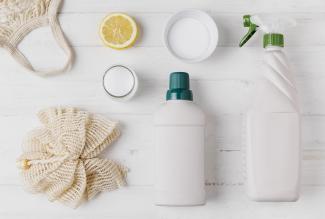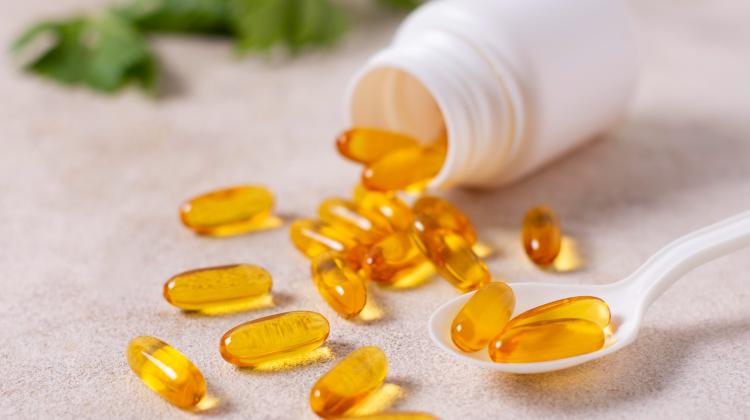Nowadays, people are paying much more attention to where ingredients come from and how they are processed. They expect ethical and sustainable practices from producers. With technology providing instant access to information beyond the product label, consumer demands for greater transparency about organic claims, ingredients and processes will continue to grow. Clear, easy-to-understand definitions of terms such as 'natural' and 'organic' would make it much easier to meet these expectations.
Growing consumer awareness of ethical and sustainable issues is driving a socially responsible response from cosmetic companies. More and more brands declaring transparency are posting ingredient information certificates on their websites. While this is a good direction, misinformation is still the responsibility of some cosmetics manufacturers and bloggers or influencers who undermine the credibility of this information by publishing unsubstantiated, pseudo-scientific or outdated claims.
One of the 'victims' of misinformation is undoubtedly SLS (Sodium Lauryl Sulphate), an anionic surfactant commonly used in many washing and cleaning products. Since the early 1990s, misinterpreted information about the toxicity of SLS to humans and the environment has led to consumer confusion and concerns about the safety of SLS as an ingredient in cosmetic or so-called household chemical products. Because scientific literature is inherently susceptible to misinterpretation by the general public, health and safety claims made in marketing campaigns are not always consistent with the latest scientific evidence or applicable regulations. They may mislead the average consumer.
In recent years, the toxicity profiles of SLS have been reviewed [1,2] in which it has been confirmed that, from a toxicological and sustainability perspective, it is an acceptable surfactant for use in cosmetic preparations and household cleaners. Years of anti-SLS campaigns have led to a build-up of consumer concerns about the safety of this ingredient. However, the main concern - that SLS can irritate the eyes and skin - can be easily addressed through proper formulation and appropriate irritation testing by product manufacturers. SLS is also considered a sustainable product due to its bio-based material content, biodegradability and low bioaccumulation potential. Toxicological data confirm that SLS is safe for use in cleansing products when formulated to minimise its potential irritant effects. Therefore, the view that SLS is a risk to human health and the environment is not scientifically supported.
Another topic of debate is how SLS is obtained. This chemical is synthesised by reacting lauryl alcohol from a petroleum or plant source with sulphur trioxide. Thus, the view held by the general public that SLS cannot be environmentally friendly because it is produced from petroleum, and therefore from non-renewable sources, is also often mistaken. Therefore, for example, a laundry detergent that is certified organic and contains SLS in its composition is
not a marketing deception - provided that the source of the lauryl alcohol for the synthesis of SLS, was vegetable oil.
This example shows that it is worth checking the source and reliability of information on cosmetic ingredients. It also confirms that even the "chemical" sounding names of cosmetic ingredients can have a natural origin.
It is worth remembering, however, that in addition to the actual cosmetic, we also buy the packaging along with it. A tube, a jar with a screw cap, a pipette, a protective film, an information sticker, a cardboard box, a fold-out information leaflet.... the list goes on and on, and with each addition the environmental friendliness of such a cosmetic diminishes.
No matter how many certifications the cosmetic compound itself has, once it has been used up, the packaging is left behind, which unfortunately is an inconvenient residue that many manufacturers - not only of cosmetics, but also, for example, of food, medicines or textiles - no longer worry about. The result is that the Earth is inundated with millions of tonnes of difficult to dispose of and, more importantly, unnecessarily generated rubbish. Fortunately, this trend is slowly changing, and it is becoming increasingly apparent on shop shelves that brands are trying to minimise their negative impact on the environment in various ways. Some are replacing cheap plastic packaging with more costly, eco-friendly and biodegradable or compostable material. Many are dispensing with additional protective films or selling their products in larger capacity packaging or with the option of pouring it into its own packaging (however, this is temporarily mainly the case for liquid detergents). It is worth bearing in mind, however, that such solutions are often out of step with the profit motive of some companies, as the use of admittedly greener, but more expensive alternative packaging will result in reduced revenue for the company. As a result, producers are forced to increase the price of their products in order to keep their production profitable, which in turn is often associated with resistance from a section of consumers for whom ecology and protection of the planet are not a priority.
For this reason, unfortunately, many of the companies resort to what is known as greenwashing, commonly referred to as 'eco-consciousness' or 'green lies'. In the simplest terms, these are actions that aim to give customers the false impression that the product or the company producing it is environmentally friendly, when in fact the opposite is true [3]. And unfortunately, manifestations of such dishonest behaviour in the cosmetics industry are numerous:
· The inclusion of words that evoke positive associations, such as 'bio', 'eco', 'botanical', 'herbal', 'natural', 'green', in the name of the company or product.
· The use of symbols and colours that allude to certificates, although they are not in fact certifications (e.g. the V from Viva! or rabbits resembling the Cruelty free symbol). Instead, they are meant to be associated with nature, so the use of leaves, flowers, green and brown colours is popular, as is the use of plastic caps that look like natural cork or wood.
· The declaration by producers that the packaging is recyclable or made from recycled materials, but this information is given with an asterisk and on the back of the packaging you can read that this only applies to a selected part of the packaging. It is also worth noting that in the 21st century, the fact that packaging is recyclable should not be so much an incentive as a matter of course, and what manufacturers should be tempting consumers with is the fact that it is made from recycled materials, as this alone makes a significant contribution to reducing the amount of rubbish present in circulation.
· Invoking the natural origin of one selected ingredient, which, thanks to a halo effect, gives positive associations to the whole product, even though in fact the ingredient itself may be less than 1% there.
· - Promoting their product as environmentally friendly because we have the option of buying just a replacement refill for the packaging we have previously purchased (whereas a truly ecological approach would be to ask ourselves whether it is not possible to design the refill in such a way that it is sufficient packaging in itself?).
· Manufacturers declaring that their cosmetic does not contain ingredients that, in the minds of consumers, may be perceived as harmful or carry other negative associations such as SLS, SLES, mineral oil, preservatives, fixatives, colouring agents (while it is important to point out that on 1 July 2019, the law has tightened in this regard, as ingredients that are legally authorised cannot be discredited [4]. However, this does not change the fact that some manufacturers are still cleverly able to circumvent these guidelines).
· Packaging plastic packaging with paper stickers or cartons that are certified to be from sustainable, renewable sources - this problem has two aspects, one is that we are only reiterating the information on part of the packaging and the other is that the sustainably sourced outer packaging is actually.... unnecessary. Especially since its life ends the moment we take the actual cosmetic out of it. So is it not environmentally friendly to do away with it altogether?
These are just some examples of the problems and manipulations in the world of natural cosmetics that consumers have to face every day. It is therefore worth approaching the products we choose in a thoughtful and, above all, responsible manner. This is why it is so important to educate ourselves in this area, so that we can make the right choices that will not only help us to take care of ourselves and our own mental comfort, but above all to take real care of our planet.
At the Institute of Natural Products and Cosmetics, we are not only involved in the creation of cosmetics, but also in their comprehensive analysis and evaluation. If you are interested in the cosmetics industry, we invite you to take the second-cycle course "Cosmetics Technology". Find out about the admissions details.





